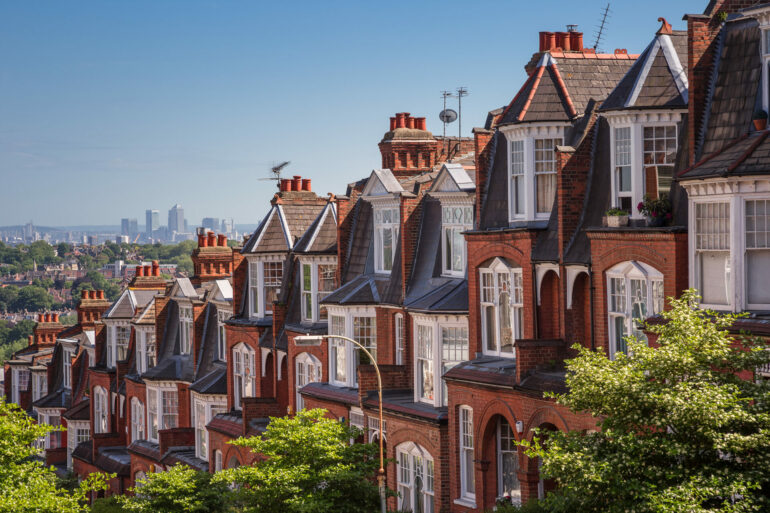House prices remained broadly flat in June, but were down 3.5% when compared with June 2022, according to Nationwide’s latest House Price Index.
The average house price stood at £262,239, rising marginally from May’s average of £260,736.
Nationwide’s Chief Economist, Robert Gardner, explained that while prices were fairly stable over the month, June is typically the strongest month in terms of seasonal price rises.
With annual house price growth continuing to soften, dropping by a marginal -0.1% to -3.5%, these figures signal the beginnings of a slow recovery for the housing market.
Gardner said: “Longer term borrowing costs have risen to levels similar to those prevailing in the wake of the mini-Budget last year, but this has yet to have the same negative impact on sentiment.
“The number of mortgage applications has not yet declined and indicators of consumer confidence have continued to improve, though they remain below long run averages.”
However, in a month that saw Bank of England raise interest rates for the 13th consecutive time, Gardener said that affordability was becoming the key issue for potential buyers.
He continued: “The sharp increase in borrowing costs is likely to exert a significant drag on housing market activity in the near term.
“For example, for a representative first-time buyer earning the average wage and buying the typical property with a 20% deposit, mortgage payments as a share of take-home pay are now well above the long-run average.”
He added: “Moreover, house prices remain high relative to earnings, and as a result, deposit requirements are still a significant barrier for those looking to enter the market.
“A 10% deposit on a typical first-time buyer home is equal to around 55% of gross annual income – this is down from the all-time highs of 59% prevailing in late 2022, but still marginally above the levels prevailing before the financial crisis struck in 2007/8.”
On a regional level, the majority of areas showed annual price declines, except Northern Ireland, which saw a modest 0.7% year-on-year price rise.
East Anglia was the weakest performing region, with prices down 4.7% compared with a year ago.
All English regions showed a slowing in the annual rate of change compared with last quarter; London saw a 4.3% year-on-year decline, while the surrounding Outer Metropolitan region saw a 2.9% fall.
Across northern England, prices were down 2.7% compared with Q2 2022. The North West was the weakest performing northern region, with prices down 4.1% year-on-year.
Southern England saw a 3.8% decline.
Scotland saw a slight improvement in the annual rate of change to -1.5%, from -3.1% last quarter.
Wales saw a further slowing in annual house price growth from -0.7% to -1.7%.”
Reaction:
Marc von Grundherr, director of Benham and Reeves:
“Higher interest rates are causing an increased level of unpredictability and the nation’s homebuyers don’t know whether they’re coming or going at present.
“This is evident when it comes to current house price performance, with property values remaining largely unchanged from one month to the next.”
James Forrester, managing director of Barrows and Forrester:
“Borrowing costs have risen significantly in recent months but while they may have reached similar levels to those that followed last September’s shambolic mini-Budget, the market isn’t feeling the same degree of strain and buyer activity is building, albeit at a more measured pace.”
Chris Hodgkinson, managing director of House Buyer Bureau:
“For those looking to sell, current market conditions are a tad hit and miss.
“We’ve seen fluctuating levels of buyer demand in recent months and, with house prices continuing to stutter due to a reduction in buyer purchasing power, many sellers are also unwilling to commit.
“The result is more time spent on the market, while those that do secure a buyer are subject to longer transaction times and a heightened chance that their sale will fail to make the finish line.”



